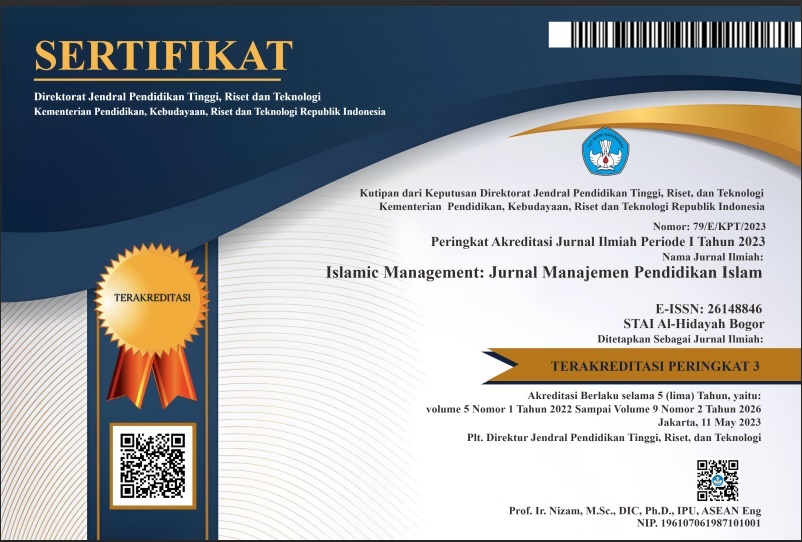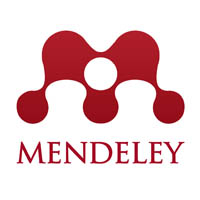STRATEGY OF RAISING ALUMNI DONATIONS: AN ALTERNATIVE FOR FINANCING A HIGHER EDUCATION
DOI:
https://doi.org/10.30868/im.v8i02.8508Keywords:
alumni, donation, higher educationAbstract
This research aims to describe the strategy of raising alumni donation in a higher education. A higher education for the developed countries has a big and important role, not only in producing competent graduates in their fields but also as the driving force for the development of economy and civilization. The government has an interest and encourages a higher education to play more role. Therefore, the government issues a policy related to the autonomy of higher education which is known university with status of legal entity. University of Indonesia is one of the universities that has the status. Consequence of the status is subsidy cuts. To overcome the problem, University of Indonesia looks for one of new sources which is alumni donation. The method used in this research is descriptive-qualitative. Collecting data uses the techniques of observation, interview, and documentation study. The result of research indicates that decisions taken by University of Indonesia as legal entity state university are strategic innovative, and attractive including the change of structure, innovation of programs, classification of alumni, and non-money donation.
References
Anthony, Bokolo. 2020. “Information Flow Analysis of a Knowledge Mapping-Based System for University Alumni Collaboration: A Practical Approach,” 1–32. https://doi.org/10.1007/s13132-020-00643-3.
Awad, R., Sherratt, S., & Jefferies, M. 2013. “Proposing a New Model for Organizational Change Management.” Scholar 12 (3): 17–28. https://cgscholar.com/bookstore/works/proposing-a-new-model-for-organizational-change-management.
Bai, Qiuyang, and Manoch Prompanyo. 2020. “Fund-Raising Management of Chinese University Foundations from the Perspective of Alumni Donation Willingness: A Case of Universities in Hennan Provice.” International Business Research 13 (7): 108. https://doi.org/10.5539/ibr.v13n7p108.
Cownie, Fiona, and Maria Gallo. 2021. “Alumni Gratitude and Academics: Implications for Engagement.” Journal of Further and Higher Education 45 (6): 788–802. https://doi.org/10.1080/0309877X.2020.1820457.
Cunningham, Brendan M, and Carlena K Cochi-Ficano. 2002. “Board of Regents of the University of Wisconsin System The Determinants of Donative Revenue Flows from Alumni of Higher Education: An Empirical Inquiry.” Source: The Journal of Human Resources. Vol. 37.
Dean, Aftab, and John Graeme McLean. 2021. “Adopting Measures to Increase Alumni Donations at Prestigious Universities.” International Journal of Business and Management 16 (12): 27. https://doi.org/10.5539/ijbm.v16n12p27.
Dollinger, Mollie, Sophia Arkoudis, and Samantha Marangell. 2019. “University Alumni Mentoring Programs: A Win-Win?” Journal of Higher Education Policy and Management 41 (4): 375–89. https://doi.org/10.1080/1360080X.2019.1617657.
Dubbs, N. L., & Mailman, J. L. 2002. “Organizational Design Consistency: The PennCARE and Henry Ford Health System Experiences.” Journal of Healthcare Management 47 (5): 307–3018. https://journals.lww.com/jhmonline/abstract/2002/09000/organizational_design_consistency__the_penncare.7.aspx.
Duderstadt, James. 2000. A University for the 21st Century. Ann Arbor, MI: University of Michigan Press. https://doi.org/10.3998/mpub.16836.
Gertrude M Hall. 1949. “Keeping Track of the Alumni Family.” Source: Peabody Journal of Education. Vol. 26.
Faria, João Ricardo, Franklin G. Mixon, and Kamal P. Upadhyaya. 2019. “Alumni Donations and University Reputation.” Education Economics 27 (2): 155–65. https://doi.org/10.1080/09645292.2018.1527895.
Fleming. 2019. “The ‘Pots of Water’ Emerging Framework for Alumni Engagement: Examining How Alumni Make Sense of Their Relationships with Their Alma Maters.” Philanthropy & Education 3 (1): 103. https://doi.org/10.2979/PHILEDUC.3.1.05.
Francioni, Barbara, Ilaria Curina, Charles Dennis, Savvas Papagiannidis, Eleftherios Alamanos, Michael Bourlakis, and Sabrina M. Hegner. 2021. “Does Trust Play a Role When It Comes to Donations? A Comparison of Italian and US Higher Education Institutions.” Higher Education 82 (1): 85–105. https://doi.org/10.1007/s10734-020-00623-1.
Freeland, Robert E., Kenneth I. Spenner, and Grace McCalmon. 2015. “I Gave at the Campus: Exploring Student Giving and Its Link to Young Alumni Donations After Graduation.” Nonprofit and Voluntary Sector Quarterly 44 (4): 755–74. https://doi.org/10.1177/0899764014529625.
Gelinas, M. A. 2003. “Strategic Planning: The First Step in the Planning Process.” The Journal of Oncology Management : The Official Journal of the American College of Oncology Administrators 12 (3): 11–13. https://pubmed.ncbi.nlm.nih.gov/12803445/.
Harrison, Willian B, Shannon K Mitchell, and Steven P Peterson. 1995. “Alumni Donations and Colleges’ Development Expenditures: Does Spending Matter?” Source: The American Journal of Economics and Sociology. Vol. 54. http://www.jstor.orghttp//www.jstor.org/stable/3486961http://www.jstor.org/page/info/about/policies/terms.jsp.
Iskhakova, Lilia, Stefan Hoffmann, and Andreas Hilbert. 2017. “Alumni Loyalty: Systematic Literature Review.” Journal of Nonprofit and Public Sector Marketing 29 (3): 274–316. https://doi.org/10.1080/10495142.2017.1326352.
Ismatullah, Hadi, and Qadhli Jafar Adrian. 2021. “Jurnal Informatika Dan Rekayasa Perangkat Lunak (JATIKA).” Jurnal Informatika Dan Rekayasa Perangkat Lunak (JATIKA) 2 (2): 213–20. http://jim.teknokrat.ac.id/index.php/informatika.
Kelchen, Robert. 2022. “Do Financial Responsibility Scores Affect Institutional Behaviors ? Author ( s ): Robert Kelchen Source : Journal of Education Finance , Vol . 43 , No . 4 ( SPRING 2018 ), Pp . 417-439 Published by : University of Illinois Press Stable URL : Https://Www.J.” Journal of Education Finance 43 (4): 417–39.
Kirana, Chandra, and Risti Wahdaniyah. 2018. “Implementasi Aplikasi Alumni Berbasis Mobile Application.” Jurnal Edukasi Dan Penelitian Informatika (JEPIN) 4 (2): 179. https://doi.org/10.26418/jp.v4i2.25752.
Kuźnar, Andżelika, and Joanna Żukowska. 2020. “Benefits Resulting from Maintaining a Relationship between Economic Universities and Their Alumni: The Case of the Warsaw School of Economics.” Przedsiębiorczość - Edukacja 16 (1): 95–105. https://doi.org/10.24917/20833296.161.8.
Michael S. Fischer. 2012. “Top 20 Colleges in Fundraising: Who’s Best at Tapping Alumni?” ThinkAdvisor.
Mora, José Ginés, and Enrique Villarreal. 1996. “Financing for Quality: A New Deal in Spanish Higher Education.” Higher Education Policy 9 (2): 175–88. https://doi.org/10.1016/S0952-8733(96)00011-6.
Morrill, J. L.,. 1938. “Improving Alumni Relations.” Source: The Journal of Higher Education. Vol. 9.
Mulyadi, M. 2016. Metode Penelitian Praktis Kualitatif Dan Kuantitatif. Jakarta: Publika Press.
Pedro, Ilda Maria, Júlio da Costa Mendes, and Luís Nobre Pereira. 2021. “Understanding Alumni-Alma Mater Commitment Relationships Upstream and Downstream.” Journal of Marketing for Higher Education 31 (2): 175–96. https://doi.org/10.1080/08841241.2020.1768200.
Pedro, Ilda Maria, Luis Nobre Pereira, and Hélder Brito Carrasqueira. 2018. “Determinants for the Commitment Relationship Maintenance between the Alumni and the Alma Mater.” Journal of Marketing for Higher Education 28 (1): 128–52. https://doi.org/10.1080/08841241.2017.1314402.
Pisarska, Aleksandra. 2020. “Sources of Financing Tasks for Public Higher Education Institutions: Findings in Light of Their Reporting.” Zeszyty Naukowe SGGW, Polityki Europejskie, Finanse i Marketing 89 (24(73)): 155–76. https://doi.org/10.22630/pefim.2020.24.73.35.
Romadhoni, Eka Nur Ahmad, Triyanna Widiyaningtyas, and Utomo Pujianto. 2015. “Implementasi Model Waterfall Pada Pengembangan Sistem Informasi Alumni SMKN 1 Jenangan Ponorogo.” Seminar Nasional Sistem Informasi Indonesia, no. November, 445–52.
Slavik, S., & Roby, Z. 2011. “Business Strategy in Explicit Description as an Illustration of Companies´ Behaviors.” Review of Applied Socio-Economic Research 1 (2): 183–91. https://ideas.repec.org/a/rse/wpaper/v1y2011i2p183-191.html.
Snijders, Ingrid, Lisette Wijnia, Remy M J P Rikers, and Sofie M M Loyens. 2019. “Alumni Loyalty Drivers in Higher Education” 22:607–27. https://doi.org/10.1007/s11218-019-09488-4.
Suyanto. 2006. Dinamika Pendidikan Nasional. Jakarta: Muhammadiyah.
Thompson, Beverly Brooks, and Michael F Burnett. 2019. “Impact of the S.T.R.I.P.E.S. Leadership and Extended Orientation Program on Philanthropic Giving.” Philanthropy & Education 2 (2): 53–74. https://doi.org/10.2979/phileduc.2.2.03.
Valtins, Karlis, Anita ; Straujuma, Igors ; Tipans, and . 2020. “BUILDING MEANINGFUL RELATIONSHIPS WITH UNIVERSITY ALUMNI.” In , 9. Bucharest: Proquest. https://www.proquest.com/docview/2454726291?pq-origsite=gscholar&fromopenview=true&sourcetype=Conference Papers & Proceedings.
Wang, Y. 2018. “What Influences Alumni Donations?” Journal of Economics, Business and Management 6 (4): 160–63. https://doi.org/10.18178/joebm.2018.6.4.567.
Weerts, David J., and Alberto F. Cabrera. 2017. “Segmenting University Alumni Using a Person-Centered Methodology.” International Journal of Nonprofit and Voluntary Sector Marketing 22 (3). https://doi.org/10.1002/nvsm.1577.
Weerts, David J, and Justin M Ronca. n.d. “Using Classification Trees to Predict Alumni Giving for Higher Education,” no. December 2014, 37–41. https://doi.org/10.1080/09645290801976985.
Downloads
Published
How to Cite
Issue
Section
Citation Check
License
Copyright (c) 2025 Zahruddin Zahruddin, Hasyim Asyari, Muhammad Munadi

This work is licensed under a Creative Commons Attribution-ShareAlike 4.0 International License.
Authors who publish with this journal agree to the following terms:
- Authors retain copyright and grant the journal right of first publication with the work simultaneously licensed under a Creative Commons Attribution License that allows others to share the work with an acknowledgment of the work's authorship and initial publication in this journal.
- Authors are able to enter into separate, additional contractual arrangements for the non-exclusive distribution of the journal's published version of the work (e.g., post it to an institutional repository or publish it in a book), with an acknowledgment of its initial publication in this journal.
- Authors are permitted and encouraged to post their work online (e.g., in institutional repositories or on their website) prior to and during the submission process, as it can lead to productive exchanges, as well as earlier and greater citation of published work (See The Effect of Open Access).






